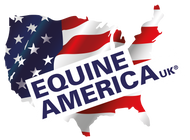Lamigard Advanced Care Pellets
Historically, most laminitis cases were thought to occur as a result of an inflammatory response, from over consumption of pasture and other feeds which are high in soluble carbohydrates, leading to a disruption to the hindgut microbiome, which caused the release of endotoxins, together with the excessive production of free radicals from oxidative processes. The actual physiological responses which lead to laminitis are still unclear, but it is thought that the inflammatory response and the high level of damaging free radicals produced by oxidation during the inflammatory response ultimately affect blood supply to the feet. The restriction of blood to the feet causes damage and death to the laminae, resulting in pain and lameness, and in severe cases, rotation of the pedal bone.
Excessive concussion of the feet (working on hard ground), retained placenta in broodmares, systemic infections and supporting limb (following an injury) laminitis are also all thought to result in laminitis as a result of Systemic Inflammatory Response Syndrome (SIRS) - Laminitis caused by inflammation and resulting oxidative damage.
However, recent studies have reported that a high proportion of laminitis cases are now thought to occur as a result of Endocrine or hormonal dysfunction.
These hormone imbalances can occur either as a result of PPID (Pars Pituitary Intermedia Dysfunction, commonly known as Cushings Disease), or a range of syndromes referred to as Equine Metabolic Syndrome or EMS. These disorders are characterised by, amongst other symptoms, insulin resistance (IR) and maybe be genetic in origin, as there seems to be a high incidence in Native ponies and some draft breeds. Again, it is not yet fully clear why higher than normal insulin levels can result in laminitis, but one theory is that insulin resistance may be associated with high levels of key proteins which cause vasoconstriction or narrowing of blood vessels in the feet. This is thought to result in narrowing and stretching of the lamellar cells over a period of time, before symptoms of pain and lameness become obvious to the owner – unlike SIRS laminitis, which is usually rapid in onset.
Lamigard Advanced Care pellets contain a potent blend of key antioxidant and other supporting nutrients and plant extracts to help in long term nutritional management of horses and ponies prone to both SIRS laminitis and those with endocrine dysfunction.
What are the benefits of Lamigard Advanced Care Pellets?
Cinnamon is a natural source of chromium which can help with maintaining blood glucose levels in insulin resistant horses and ponies.
Melon Pulp is a natural source of key antioxidant enzymes.
Magnesium also plays a key role in helping to support a normal antioxidant and inflammatory response .
Folic Acid plays a key role in nitric oxide generation, which is important for vasodilation -helping to keep blood vessels open in the feet.
Biotin is included at 20mg per 50g serve, to support high quality horn growth from the coronary band to the base of the hoof wall.
MSM provides a bio-available source of sulphur to support and help strengthen the bonds between the hoof tubules. It also helps to support a normal inflammatory response.
Methionine is a sulphur containing amino acid, and provides a bioavailable source of sulphur to support the sulphur bonds between the tubules.
Zinc is a key mineral in the production and maintenance of healthy hoof horn.
Probiotics help to support the gut microbiome, which is fundamental to overall health and may be disrupted in horses and ponies prone to laminitis
Antioxidants Vitamin E and grapeseed extract help to neutralize damaging free radicals and support the immune system.
 Skip to content
Skip to content

